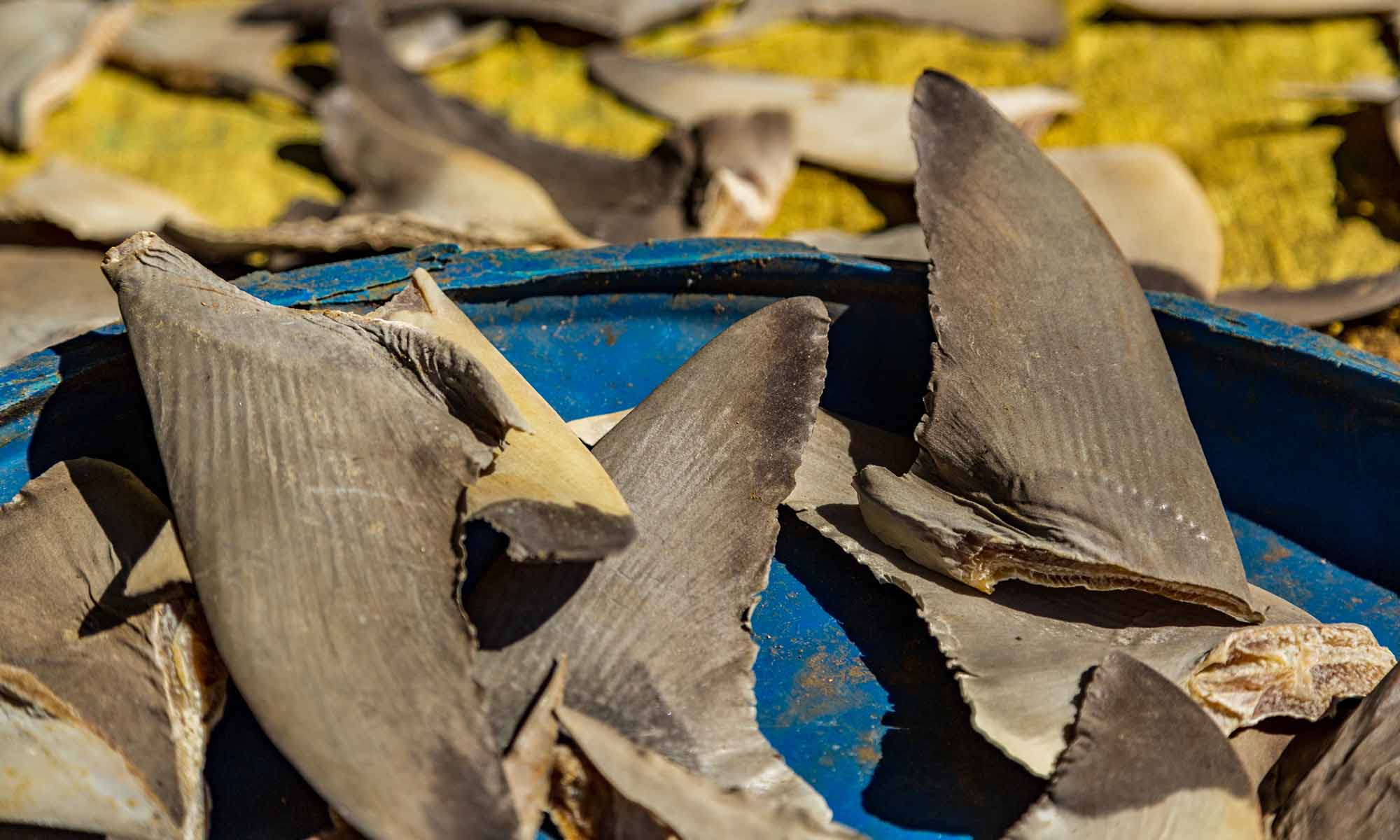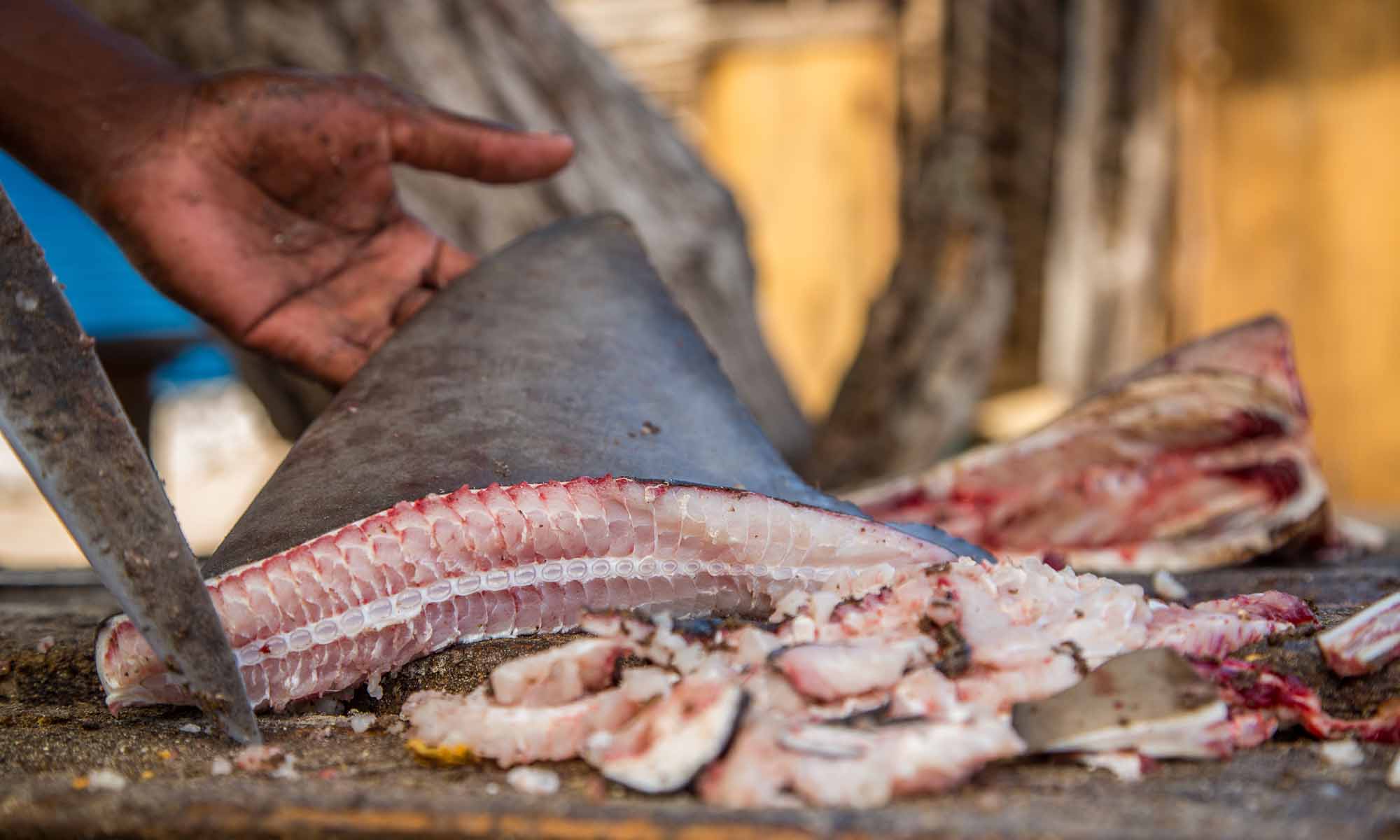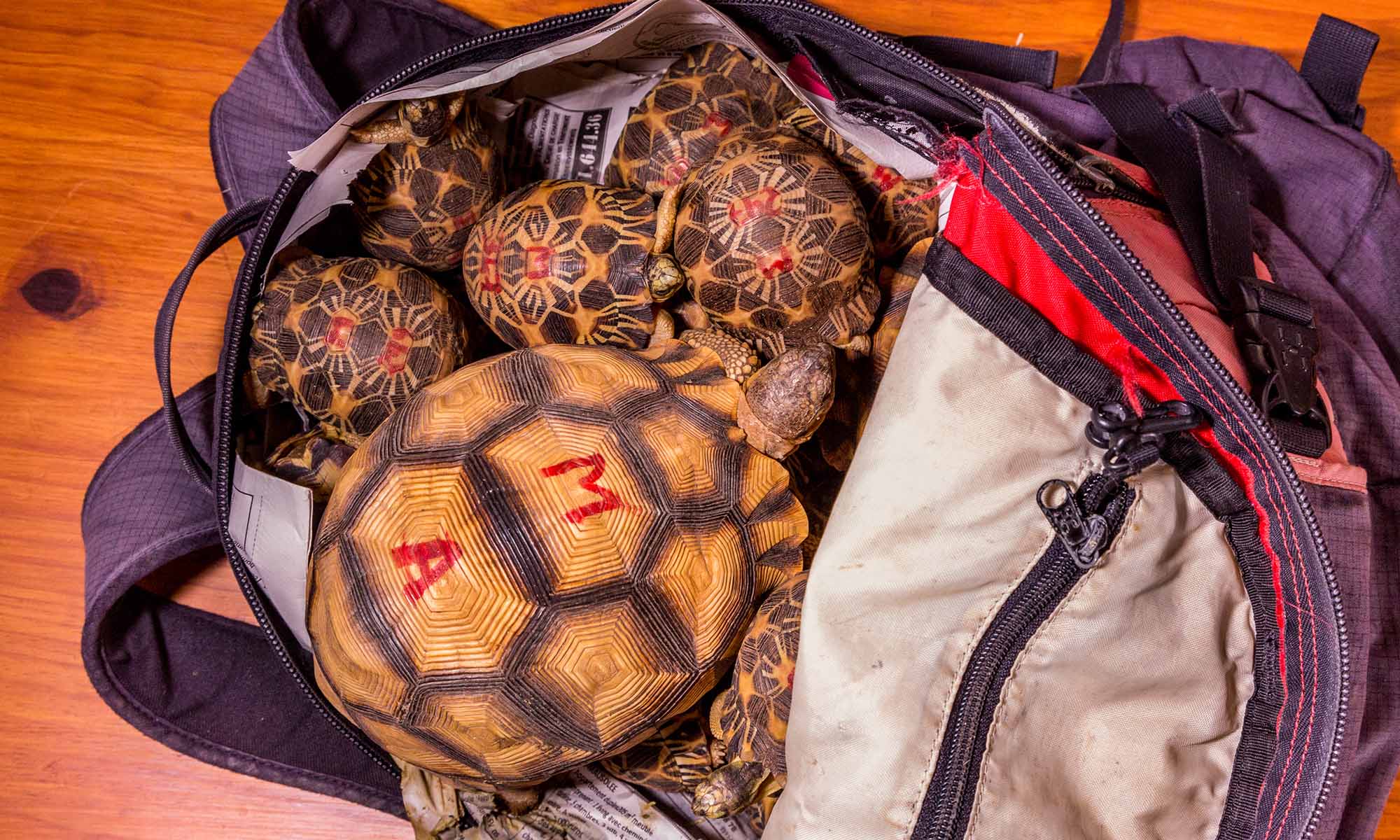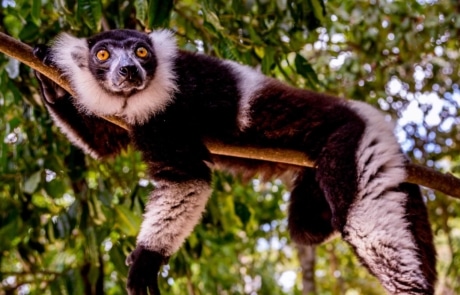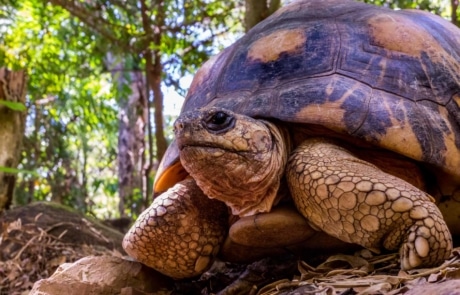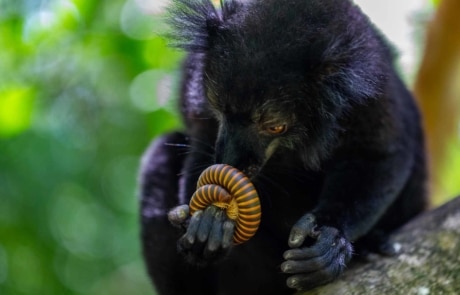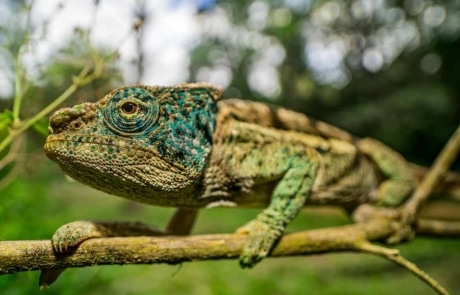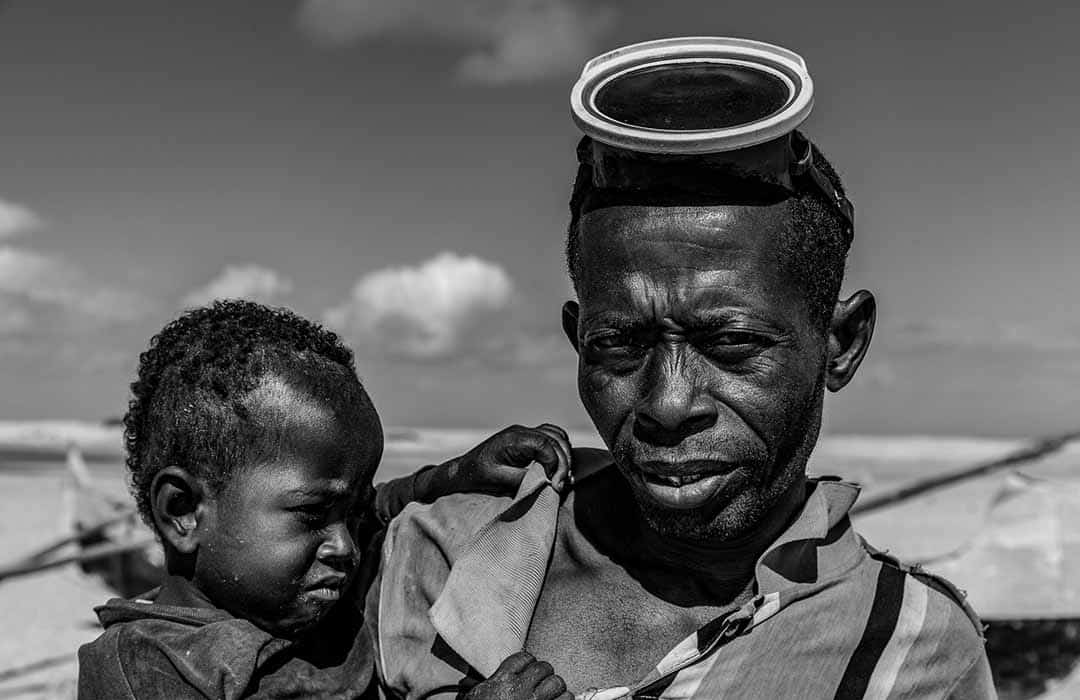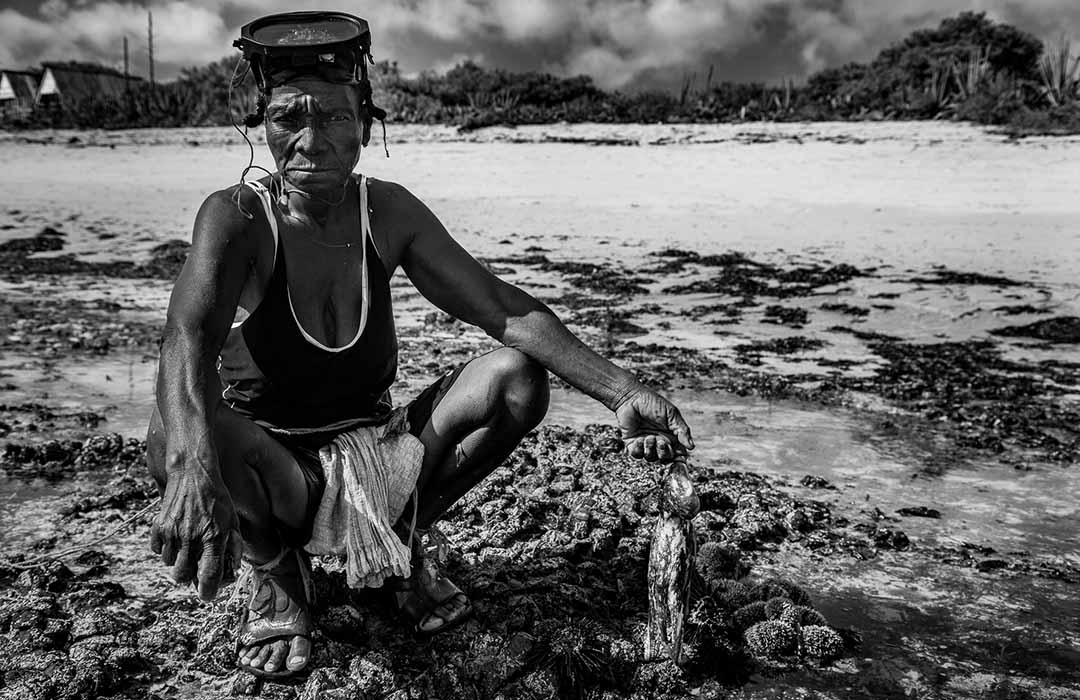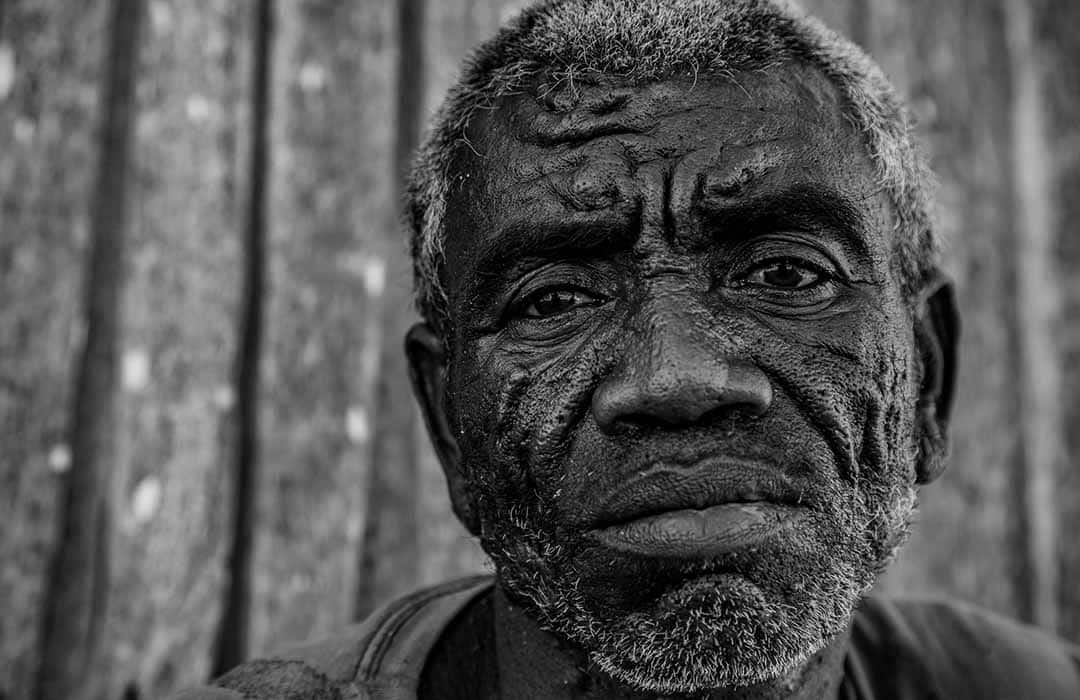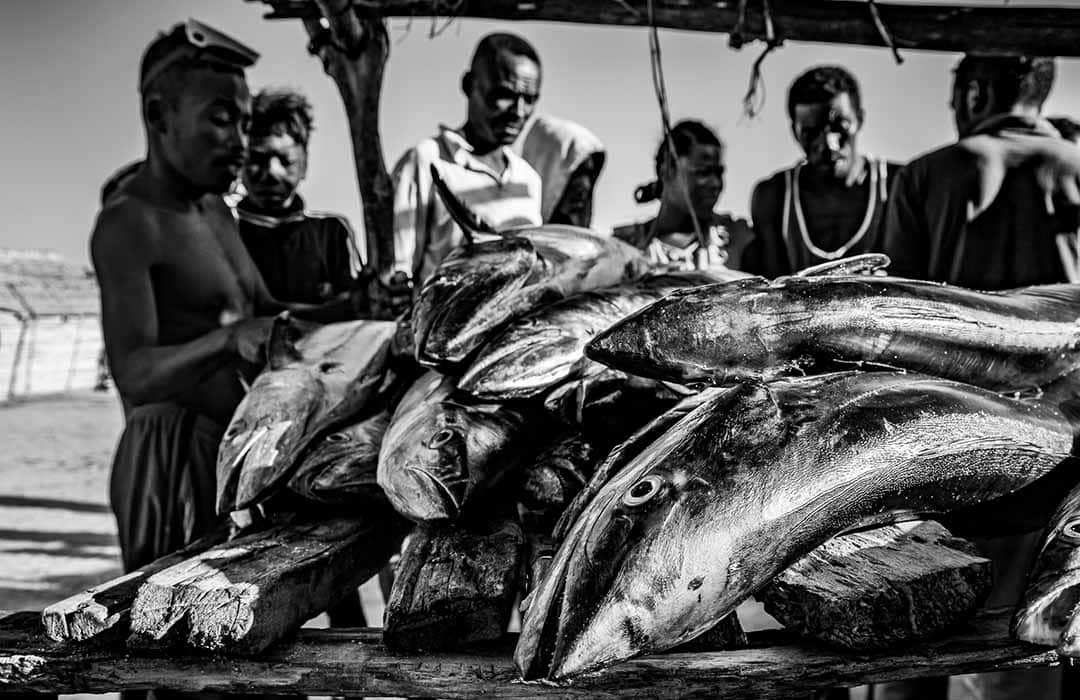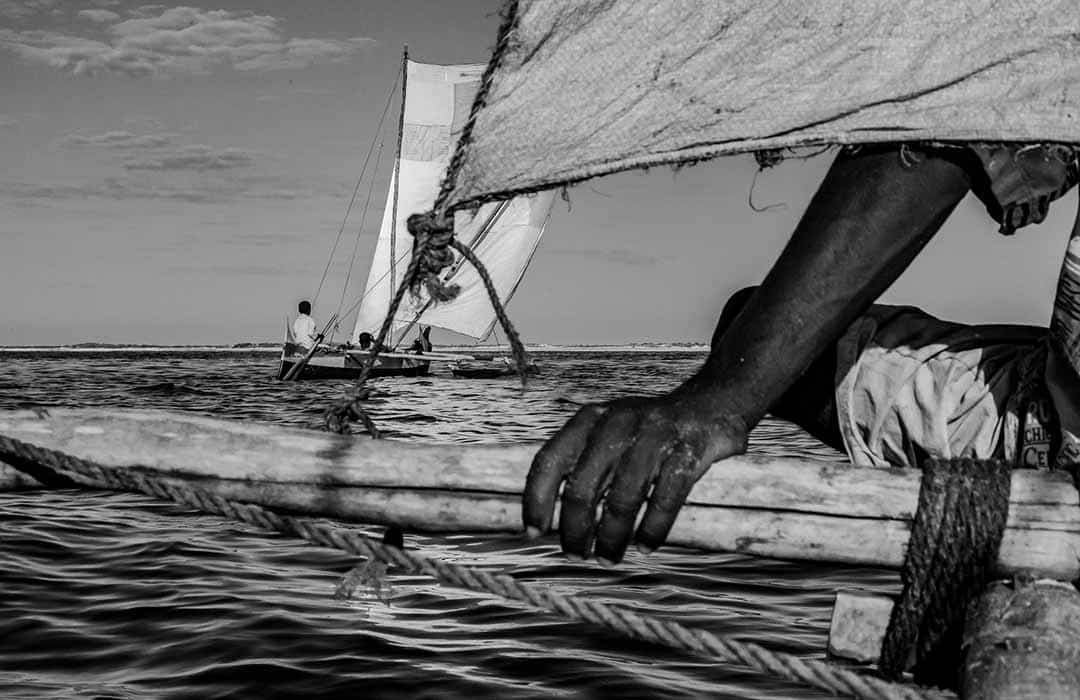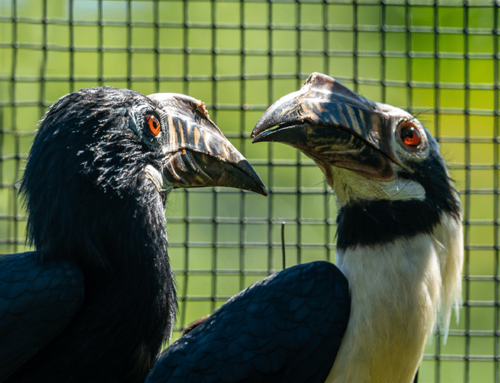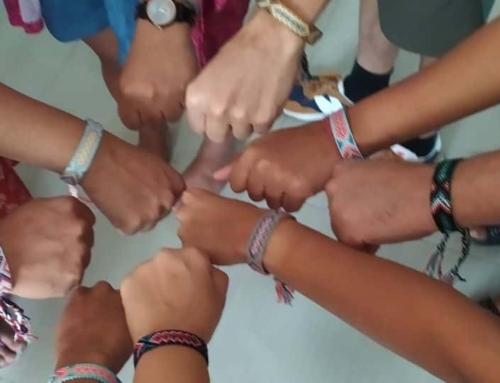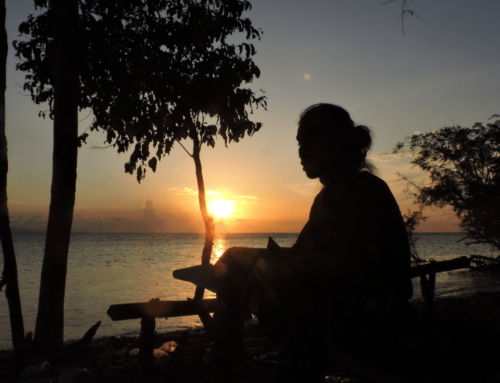Chris Scarffe is an environmental filmmaker who has been lucky enough to work in some of Earth’s most unique and diverse locations, both on land and underwater. In 2019, Synchronicity Earth worked with Chris to produce a film to celebrate our tenth anniversary and showcase the brilliant work being done by some of the partners we support through our conservation Programmes. Chris visited four of our partners, in the Democratic Republic of Congo, Vietnam and the Philippines.
We spoke to Chris about what he found most challenging and most rewarding when making this film. And we asked him about conservation, particularly in his adopted home country of Madagascar, a hotspot for biodiversity, but also one of the poorest countries on Earth where species and ecosystems face extraordinary threats.
What were some of the challenges when shooting this film?
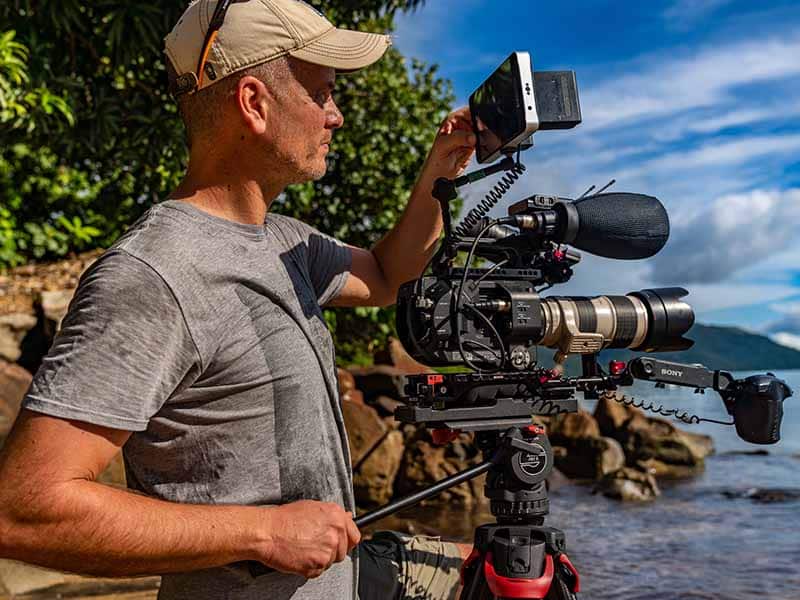
Photo by Leah Glass
Wilderness areas are disappearing globally, which typically means that you now have to travel further and further to reach these remote areas.
One of my trips for Synchronicity Earth included filming and photographing in the Democratic Republic of Congo. This involved a lot of travel across this vast country: two days in a small wooden boat up the Congo River; hiking through thick forest with heavy camera gear to film bonobos; and flying in a cramped 8-seater plane where my fellow passengers included 6 juvenile crocodiles unfortunately destined for the pot in Kinshasa. For the last leg of the journey, we careered along sodden mud tracks on the back of antiquated and heavily laden motorbikes. Our destination was a remote Pygmy community, but the torrential rain storm made what was already a difficult journey especially tricky. Despite several falls from our bikes in the rain, I will never forget the genuine heartfelt gratitude and warm welcome we received on arrival as the entire village serenaded us with songs and welcomed us to their remote home.
Drone videography is one way I eased some of the challenges associated with travelling through dense forest. It really is a game-changer, as it removes the need to travel on foot to film large areas and aerial imagery offers such a different perspective. It provides breathtaking views of the natural beauty of an area, but also of the threats facing it and the difficulties in implementing the solutions to protect it.
Drone videography can open up new perspectives on nature and our place in it. Image: Chris Scarffe
What were some of the key things you took away from shooting this film?
Well, despite the differences in the four conservation partners I visited, I uncovered one unfortunate similarity between them: the desperate need for the conservation work that they are doing. Even more so as the organisations are working with animal species and communities that are often overlooked by funders and the mainstream media. The overarching narrative that we wanted to get across with the film was that globally we are facing a multitude of environmental issues, but that these are not insurmountable.
Through hard work, education, patience and the right support, there are communities and organisations who are making a huge difference, and if we can help to provide them with the resources and tools to do this work, we can have a genuinely positive impact for biodiversity and also for the communities themselves.
I found the positivity and belief within these communities that they could make a difference truly inspirational.
Patrick Saidi, National Coordinator, Dynamique des Groupes des Peuples Autochtones, DRC. Image: Chris Scarffe
If you were to focus in on any one of the interviewees in the film and construct a piece around them, who would it be?
I met a host of fascinating people in Asia and Africa, all of whom gave incredible insights and welcomed me so warmly into their community. So it’s very hard to focus on any one individual person. But if I had to pick one, I would choose Mrs. Bolinga. She is a farmer and the local midwife in the village of Ndombe in the DRC. Initially she was quite shy, but when the camera came on she came alive and spoke passionately about a host of topics, including losing traditional lands to logging companies, the discrimination and violence her community faces and the high mortality rates due to a lack of basic medical care in the area. Despite these hardships, she was very resolute that she could make a difference to her community and their lands. Her pride in the opening of a new hospital in her village was obvious, and she was relishing the opportunity to receive further training and have proper facilities and medication to fulfil her job as a midwife.
Mrs Bolinga, Mai Ndombe province, Democratic Republic of Congo. Image: Chris Scarffe
Are there any stories that there was not space for that you wish you could have included or expanded upon?
The problem with any short film is that there is always so much else you wish you could have included. This was especially true of this short film for Synchronicity Earth as we decided that I would film a lot more content than was necessary for just the film. This was so that the film and photographic media gathered could be used in future content such as education, awareness and fundraising programmes by the partners themselves. Making the final selections of which footage to include with my talented co-editor Damian Antochewicz and the team at Synchronicity Earth was therefore especially tough. It’s very difficult to choose but if I had to, there are two stories I would like to have pursued a bit further.
Firstly, I would like to have expanded on one of the central narratives in the film which was the threats that indigenous people face and the vital role they play in conservation.
This is a topic very close to my heart and I am currently developing and seeking funding for a documentary that will look into the rise in the deaths and assaults of environmental defenders globally. Many of these environmental defenders come from remote indigenous communities like those featured in the film.
Secondly, I would like to have expanded more on the conservation efforts to save the Philippine crocodile. This is a species which is critically endangered and facing extinction. Much of what we see in the media is doom and gloom when it comes to the environment, and as an environmental filmmaker and photographer a lot of what I see on a regular basis is difficult and depressing. But people need to see that we can make a difference and that’s why working with groups such as the Mabuwaya Foundation renews hope that we can turn the tide and save species with the right approach. The team were incredibly hard working, good fun and endlessly positive and most importantly of all, they are bringing this species back from the brink. I would love to follow up on this story and see what happened to the new hatchlings we filmed in their centre and to try and find “Cut Tail” the 3-metre male crocodile whose relocation into the wild featured prominently in the film.
Members of the Mabuwaya Foundation team taking measurements from a critically endangered Philippine crocodile. Image: Chris Scarffe
The film focuses on stories from two of our programmes: Asian Species and the Congo Basin. Are there any other areas of Synchronicity Earth’s work (for example, Freshwater, High & Deep Seas, Amphibians) that you would like to explore?
You are asking me to make some very difficult choices with these questions! I guess I would have to choose something with a water-based theme as this is where I got my first big break as a filmmaker many moons ago. Back then I was working doing archaeological excavations of historical shipwrecks in Malaysia. To cut a long story short, The History Channel wanted to make a documentary on our work, but my boss was wary of giving the position of the shipwreck to outsiders. My boss, however, was still keen for publicity, so consequently a compromise was reached and, despite the fact that I had never filmed underwater before, a large underwater camera housing was thrust into my hand. With that “Sliding Doors” moment, my career as a filmmaker and photographer began…
If I had to narrow it down further, I would continue with this marine theme of exploration and conservation and cover your deep sea programme. I would love to travel by submersible one day, to explore and film the ocean floor and its inhabitants.
To document this other world – a world which we rely on and stand to lose if we as humans don’t stop our destructive practices – would be a dream come true.
How did you come to be based in Madagascar?
As an environmental and wildlife filmmaker and photographer I’ve been fortunate to spend a lot of time covering stories in Africa. However it was not until 2011 that I first visited Madagascar, the “eighth continent”. During this trip I covered stories on the tortoise “mafia” and shark finning.
I really liked the country, its people and the unique flora and fauna found there. I am fortunate that I get to travel to a lot of incredible places as part of my work, but Madagascar really resonated and every time I left I always found a way to come back!
In 2014, I was in Madagascar filming and producing for a show for Vice on HBO which looked into the issues of overfishing in Africa. During this shoot I met my now partner, a British scientist working on a community-based mangrove conservation project (incidentally, for a successful and groundbreaking marine conservation organisation, Blue Ventures, that Synchronicity Earth supported quite early on in their development). As our relationship developed, it inevitably led to me spending more and more time in Madagascar. We both love the country, so I decided to bite the bullet and join her there and set up a business, imaginatively named ‘Madagascar Film & Photography’!
Madagascar is an island of extraordinary and unique biodiversity which is incredibly threatened – like many other areas where Synchronicity Earth supports work. What makes you fearful for the environment in Madagascar, and what gives you hope?
Yes, as you say, Madagascar is truly unique with approximately 90% of its flora and fauna found nowhere else on Earth. Unfortunately, much of the habitat that supports this incredible diversity is being lost at a very rapid rate. I worry that the country will not be able to turn things around unless something happens very soon. There are no easy solutions to these problems either, especially in a country which was recently declared as one of the poorest on Earth by the World Bank.
Madagascar: a country of extraordinary biodiversity. Photos by Chris Scarffe (click on image to enlarge)
Having said that, I am always blown away by the individuals and groups that I meet as part of my work that are fighting to meet and balance the needs of the people with those of the wildlife and their natural habitat. Over the years I’ve met so many people who are making a big difference, whether it’s communities replanting mangroves or organisations working with local famers to find more sustainable farming methods.
Closer to home, my colleague Michel Strongoff aka Goff at Madagascar Film & Photography never ceases to amaze me. Goff is from a Malagasy fishing tribe known as the Vezo. In the past, Goff engaged in many destructive fishing practices. Despite only having a basic level of formal education, he has turned this around and made a new life for himself. He now works tirelessly as a conservationist, educator and environmental photographer and filmmaker. His photographs and films are starting to have a real impact both nationally and internationally.
Michel Strongoff aka Goff, a Malagasy fisherman turned photographer, whose films and photographs are starting to have an impact locally and internationally. Photo by Leah Glass
Documenting everyday life in a Vezo community in Southwest Madagascar. Photos by Goff (click on image to enlarge)
As someone who has built a successful career creating environmental, but also very human stories, what tips would you give to any aspiring environmental filmmakers out there?
This is a question I get asked a lot. I would say perseverance, practice and choosing projects that you are truly passionate about. When I started out in the industry, it was incredibly hard to get anything with an environmental focus commissioned.
I remember one owner of a very well-known British natural history production company telling me ‘you’re either a filmmaker or a conservationist. You can’t genuinely be both’. I took that to heart and I’ve since been striving to prove him wrong.
Fortunately, the TV industry is changing, if still too slowly for my liking. Broadcasters and commissioners are starting to produce programming that addresses the multitude of environmental issues that we face. Education is vital if we are going to save our planet and the media has a major role to play in this. The growing levels of environmental activism and young environmental filmmakers and photographers that are creating powerful and engaging media is encouraging.
The fact that so many people are now shining a light on both the problems and solutions that our planet is facing gives me hope. Ultimately, don’t be put off by what people tell you and make the kind of content you believe in.
Amen to that! Thank you.
Bringing Conservation to Life
A film by Chris Scarffe and Synchronicity Earth
Film and photography are vital tools to help us tell stories that need to be told, but how do we understand what impact they can have, and what are some examples of films that have inspired action among their audiences? Read our blog to find out:
How can environmental films make an impact?
*Unless otherwise stated, all photos in this piece are by Chris Scarffe.


